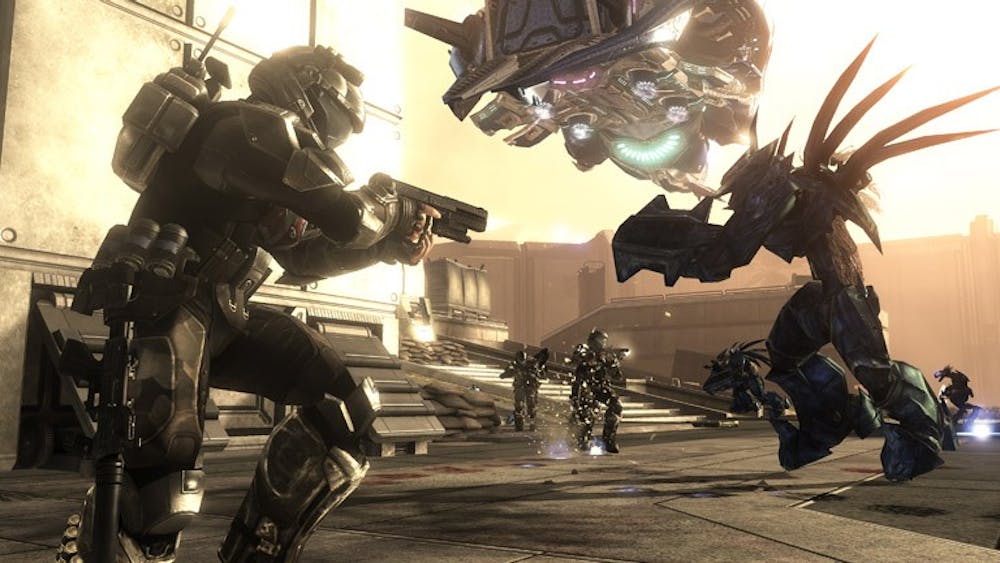Grade: A The “Halo” series started out as a game that merged visceral, tactical action with an excellent story line and powerful atmosphere. For better or worse, the sequels followed the same formula and were defined by many as games that either did or did not live up to the original. “Halo 3: ODST” however, is a curious item. While not long or new enough to be considered more than an expansion pack, the game explores a different approach to the series and becomes all the more interesting for it.
As quickly explained at the beginning of the game, the story takes place centuries in the future as a coalition of aliens called the Covenant have been wiping out humanity, finally discovering our last stronghold on Earth. For those bewildered by the title, “ODST” stands for “Orbital Drop Shock Troops,” the best of the best soldiers dropped from spaceships onto planets in cramped drop pods (witnessed from first person in a suitably intense introduction to the game). You start out playing as “the Rookie,” a new member of a squad sent to capture a Covenant ship over the city of New Mombasa, until the ship warps out of the city, leaving the ODST to take back the city from the aliens.
But the Rookie doesn’t witness most of this; knocked out cold on the way down, you wake up at night hours after the drop and are left to search the city, abandoned by all but the Covenant for clues as to what happened.
After the first encounter, it becomes clear how much more fragile the ODST are than the series’ old hero, Master Chief, as they don’t regenerate health. Ammunition is scarce in the city, but the enemies are no less difficult than in previous games. These elements coupled with the dark, abandoned city, the spectacularly moody soundtrack and signs from the day’s vicious battles create a brilliantly tense survival-horror atmosphere that may bewilder those who expected to go guns blazing the whole way.
As you find various clues to what happened during the day, you’ll be transported to a flashback level related to that clue where you play as a different ODST. These levels are more straightforward and traditional, but no less fun than anything in the original “Halo 3.” The slower pace of the free-roaming city sections balances out the flashbacks, which are even faster and more intense than all but the series’ largest battles (though for some reason, the game continues the “Halo” tradition of including one clunker level towards the end).
While the previous games focused on an odyssey across the galaxy, quickly moving from different events, “ODST” focuses on one day’s crucial battle, looking at it from as many points of view as possible. With no superhuman savior in the fight, the missions emphasize the story of desperate fighters against impossible odds to create a more emotionally engaging story.
The new multiplayer imitates “Gears of War’s” Horde mode, where you and up to three friends can take on waves of enemies in various locations transposed from the campaign over Xbox LIVE. Although it’s disappointing that this mode doesn’t have matchmaking, it’s still incredibly exciting. You only get a pool of seven lives for the entire team, but lives are added at the end of each set (each of which consists of five waves of increasingly difficult enemies), making it seem like victory is always within your grasp. The maps are all varied in terms of layout, making it necessary to take a different tactical approach for each one.
Despite having mostly the same basic mechanics as the rest of the “Halo” series, “ODST” manages to keep the gameplay fresh with new, free-roaming gameplay mixed with the finely-tuned action one expects in the series. Though it’s aimed almost entirely at people who prefer the single-player or co-op experience, anyone who fits that bill need not look further.
You can reach this staff writer at thescene@theeagleonline.com.





